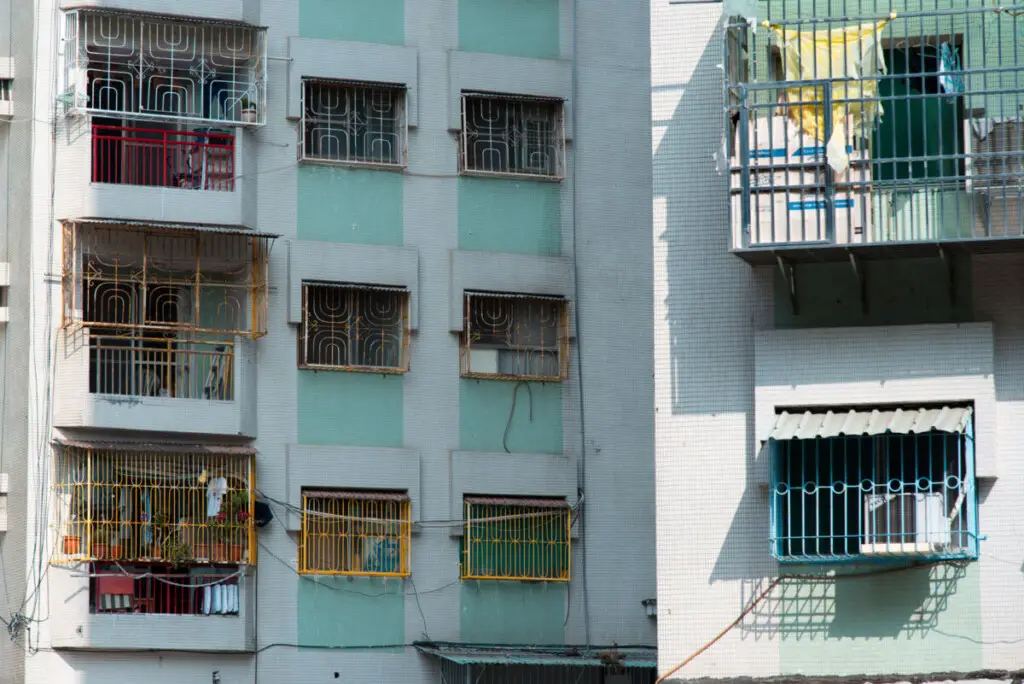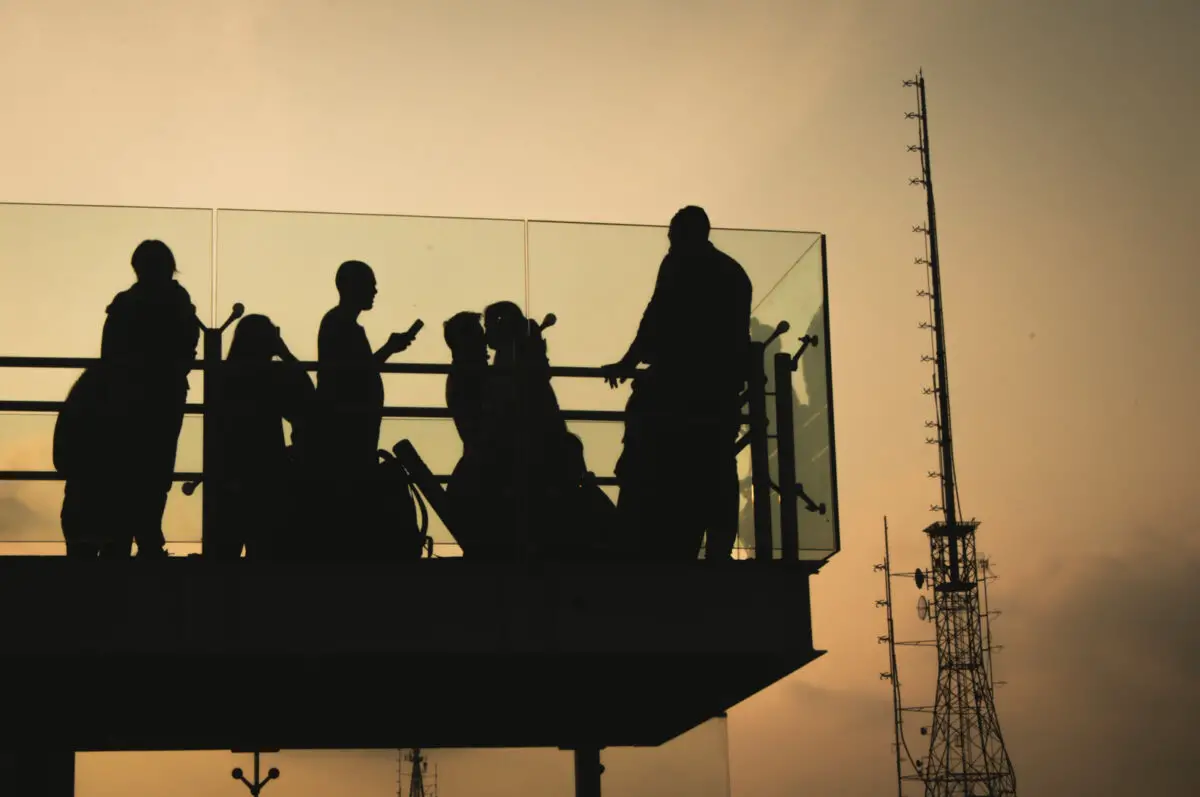Overloading a small balcony can lead to safety hazards that put people in danger. Collapsed balconies may even cause fatalities. So, you must know the exact weight limits of your small balcony.
Small balconies are generally designed to carry the weight of no more than ten people. If designed properly, your balcony can hold at least 50 lbs. (22 kg) per square foot. However, a balcony is built to safely maintain different weights, depending on the design, materials, and time of construction.
This detailed guide provides all the information you need to figure out the weight capacity of your small balcony.
How Much Weight to Place on Your Balcony
A balcony will typically have multiple loads, including tables, chairs, and flower pots. Naturally, the weight of such items decreases the number of people that the structure can safely support.
A key factor to consider when determining the right weight to place on your balcony is the “live loads.” This is the amount of weight being held by a balcony at any given time.
There are, of course, other regional factors that also play a part. Such include snow load as it affects a balcony’s load hugely.
So, how much weight can a small balcony hold?
In short, the question has no one right or perfect answer. Having noted that balconies are normally load-rated to at least 50-100 lbs. (22-45 kg) per square foot, then a small balcony will hold a lesser weight in total.
There’s also a chance that your particular small balcony was built as a patio structurally, which could affect its load rating capacity. A patio could possibly hold much more than the standard 50 lbs per square foot.
Factors to Consider in Determining Weight Capacity
More and more people are spending time on their balconies, but some may not be aware of the weight limits of these structures.
It is estimated that, in the US, 500 people get injured annually by deck and balcony collapses, while 50% of the 40 million decks across America have not been built to code.
Even if your balcony was constructed to code, there’s still the possibility of wood rot as well as other environmental factors that could compromise the structure’s integrity. Take note of this if you are living in an area that experiences extreme weather.
Here are some of the variables that can influence the weight capacity of your small balcony.

Live and Dead Loads
Balconies are designed and constructed to carry a specific amount of static weight: live and dead loads.
A structure’s dead load includes the total weight of the materials used, such as the concrete slab, support beams, railings, and all other materials that are permanently fixed to the substrate. These include pavers and the tile system.
Live loads are made up of any transient or temporary forces acting on the building’s structural element. They include people, items of furniture, and any other items that are not permanently fixed.
If the combined weight of both live and dead loads exceed their set limitations, your small balcony could be a safety hazard.
Balconies are ideally constructed to withstand a live load equal to 1.5 times that of the building’s adjoining or adjacent space (living room or bedroom).
Balcony Structural Integrity
You might want to check how much weight your small balcony is designed to withstand before placing lots of planters, flower pots, and other gear. It may appear like a minor detail, but weighing down the structure of your balcony can be extremely dangerous.
Typically, balconies are made of a mixture of concrete and rebar. A weakened structure may have cracks that can allow water to seep through and corrode the rebar. Regularly check for visible cracks or any signs of discoloration, as that may indicate a structural problem.
Even if your balcony was built in accordance with the local building code, the element of risk still remains. Other environmental factors could compromise the structure’s integrity, especially in extreme weather regions.
You should also know that the process of construction of the balcony would also have an impact on its strength, just as much as the materials used. Concrete mixes typically have specific ratios, and the construction process also involves a critical curing period for maximum strength.
Support Columns
Balconies and patios may have various support features to give them greater structural strength. This includes support columns.
Support columns must be designed to hold the maximum expected load as well as the unsupported column’s height. Notching of columns must be properly constructed and designed to provide safe and strong support for balconies.
Of course, any lingering questions you might be having concerning your balcony’s structural integrity should be directed to an experienced structural engineer. They can inspect the structure and give a professional opinion.

The Railings
Apart from the weight you apply on the balcony platform, you may also lean on the railings. Therefore, you need to be sure that it can support your weight.
Over time, railings, usually steel or aluminum, can deteriorate because of water damage. Therefore, ensure these are checked regularly for signs of rust. The rotted or loose railing should be replaced immediately.
The strength of your balcony railings can also be tested by carefully pushing or shaking them. If you meet firm resistance, they should be safe.
Ensure the balcony railings are also properly secured against any form of upward movement. They need to be firmly attached to prevent movement in any direction.

Danger Signs to Watch
If you’re concerned about your balcony not being able to hold your weight, you can proactively look out for danger signs.
While some danger signs may require the expert advice of structural engineers, others can be identified by homeowners and tenants.
Sagging Balcony
A sure sign of danger is balcony sagging.
How does sagging happen?
Well, many people love lining the walls of balconies with plants and flowers. If they are too heavy, it can lead to overloading, so you should be careful. A good solution, if you must have greenery on your balcony, is to use lightweight pots.
Balcony Cracks
If you notice cracks anywhere within the structure of your balcony, that is a clear indicator that there is something wrong.
A crack appearing in any brickwork means that the balcony is being stressed by something, such as an overload or weakening of the support structures.
It’s Older Than 15 Years
If your balcony or deck is older than 15 years, have a professional inspect it first. This is especially important if you’re moving into another house.
Such old houses may need reinforcement apart from repair, particularly if they haven’t had regular maintenance.
Also, take note that older balconies may have been constructed before current safety codes. Therefore, you’ll have to investigate the building requirements that applied to the house during construction.
Missing or Damaged Parts
Missing or damaged parts are clear signs of potential problems. To identify such issues early enough, make sure to thoroughly inspect your balcony once a year.
Some things you should look out for include:
- rusted or missing nails
- loose boards
- splinters
- loose fasteners
- rotting wood
- swaying movements
Conclusion
As you can see, the answer to how much weight a small balcony can hold goes beyond simply a numerical figure. It’s a combination of the size, how it was built, the support structures, the local building code, the climatic region, the materials used, and many other factors.
Most importantly, consult a building structural engineer and the local building code to avoid overloading your small balcony.

